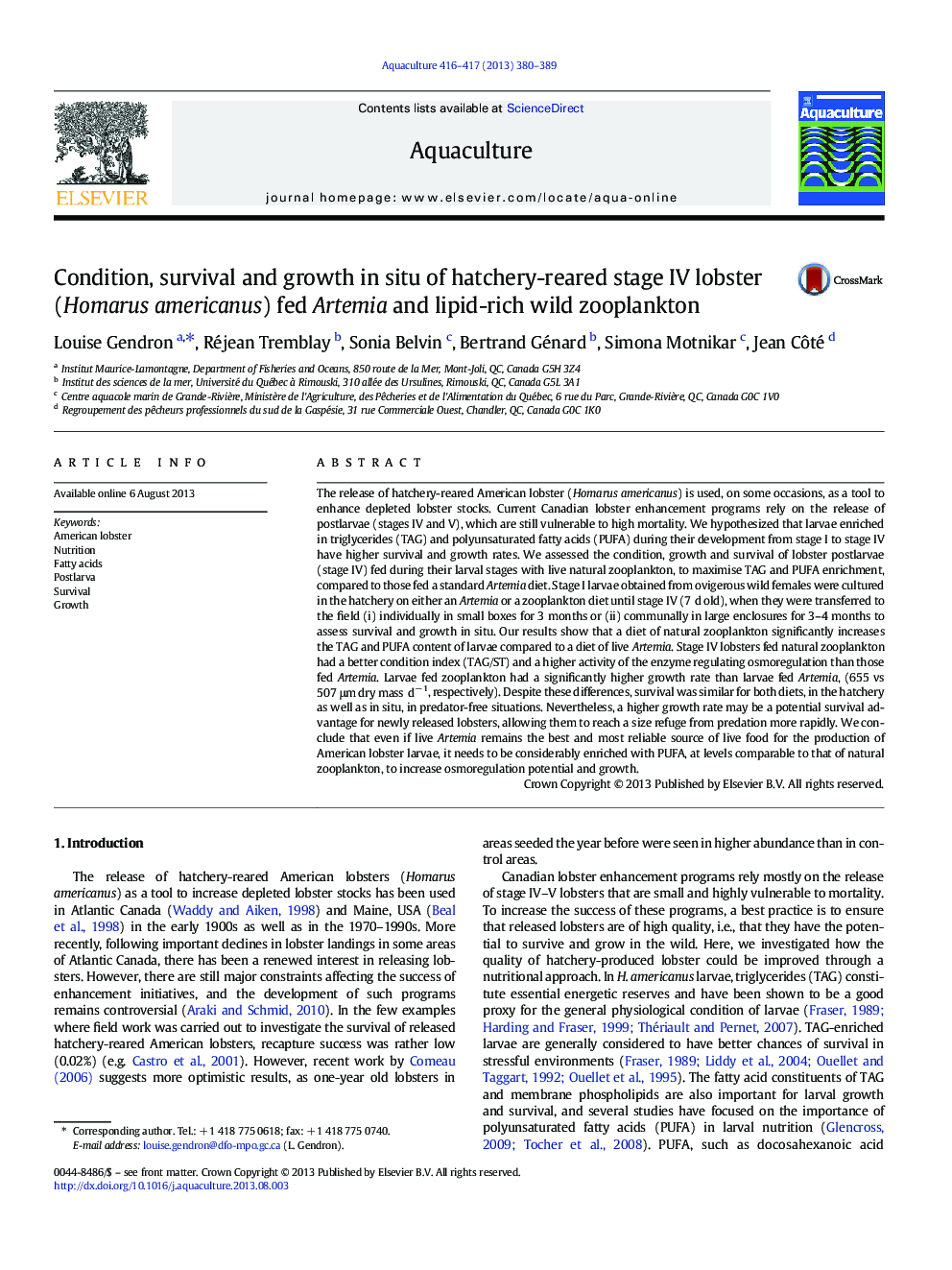| کد مقاله | کد نشریه | سال انتشار | مقاله انگلیسی | نسخه تمام متن |
|---|---|---|---|---|
| 2422065 | 1552865 | 2013 | 10 صفحه PDF | دانلود رایگان |

The release of hatchery-reared American lobster (Homarus americanus) is used, on some occasions, as a tool to enhance depleted lobster stocks. Current Canadian lobster enhancement programs rely on the release of postlarvae (stages IV and V), which are still vulnerable to high mortality. We hypothesized that larvae enriched in triglycerides (TAG) and polyunsaturated fatty acids (PUFA) during their development from stage I to stage IV have higher survival and growth rates. We assessed the condition, growth and survival of lobster postlarvae (stage IV) fed during their larval stages with live natural zooplankton, to maximise TAG and PUFA enrichment, compared to those fed a standard Artemia diet. Stage I larvae obtained from ovigerous wild females were cultured in the hatchery on either an Artemia or a zooplankton diet until stage IV (7 d old), when they were transferred to the field (i) individually in small boxes for 3 months or (ii) communally in large enclosures for 3–4 months to assess survival and growth in situ. Our results show that a diet of natural zooplankton significantly increases the TAG and PUFA content of larvae compared to a diet of live Artemia. Stage IV lobsters fed natural zooplankton had a better condition index (TAG/ST) and a higher activity of the enzyme regulating osmoregulation than those fed Artemia. Larvae fed zooplankton had a significantly higher growth rate than larvae fed Artemia, (655 vs 507 μm dry mass d− 1, respectively). Despite these differences, survival was similar for both diets, in the hatchery as well as in situ, in predator-free situations. Nevertheless, a higher growth rate may be a potential survival advantage for newly released lobsters, allowing them to reach a size refuge from predation more rapidly. We conclude that even if live Artemia remains the best and most reliable source of live food for the production of American lobster larvae, it needs to be considerably enriched with PUFA, at levels comparable to that of natural zooplankton, to increase osmoregulation potential and growth.
Journal: Aquaculture - Volumes 416–417, 5 December 2013, Pages 380–389